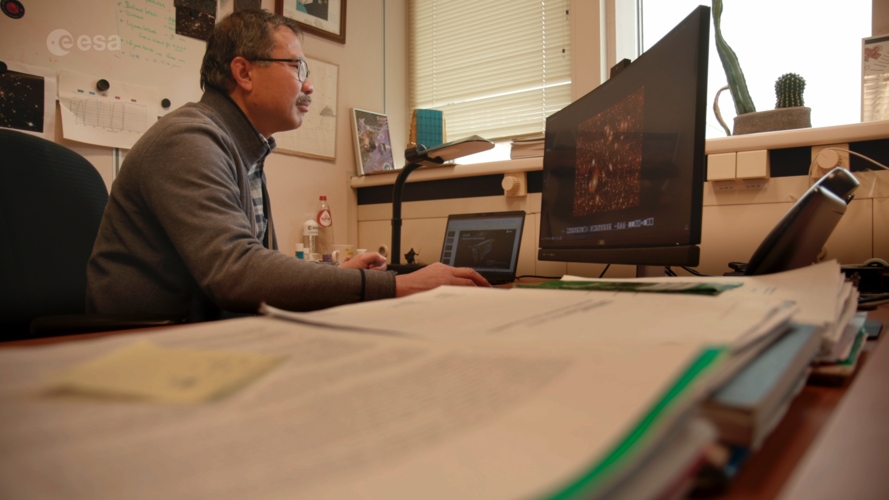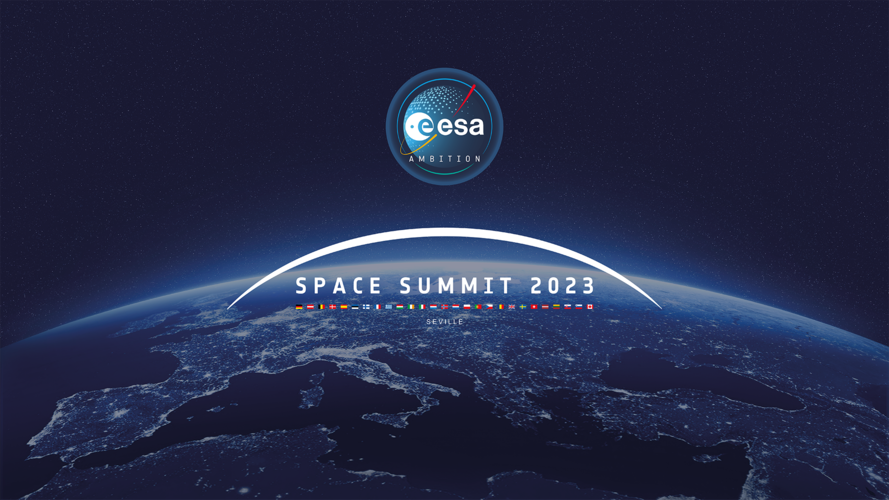
Copernical Team
Earth from Space: Lake Maracaibo
 Image:
The Copernicus Sentinel-2 mission takes us over Venezuela’s Lake Maracaibo, the largest natural body of water in South America.
Image:
The Copernicus Sentinel-2 mission takes us over Venezuela’s Lake Maracaibo, the largest natural body of water in South America. Preparing for Euclid’s first images: from puzzling data to dazzling views
 Video:
00:02:59
Video:
00:02:59
Never before has a telescope been able to create such razor-sharp astronomical images across such a large patch of the sky.
On Tuesday 7 November, ESA will release the first full-colour images captured by its recently launched Euclid space telescope. These images form part of the mission’s ‘Early Release Observations’ – where Euclid was tasked with scrutinising a set of celestial targets chosen for their public appeal and scientific value.
The five images are full of cosmic secrets waiting to be revealed. And this is just the beginning. During its six-year mission, Euclid will generate the equivalent of a
NASA's Lucy spacecraft competes first asteroid flyby
 NASA's Lucy spacecraft completed its first flyby of an asteroid Wednesday and "phoned home" by transmitting data back to Earth.
The asteroid, named Dinkinesh, is the first of eight asteroids Lucy will observe during its mission.
"Based on information received, the team has determined that the spacecraft is in good health and the team has commanded the spacecraft to start downlink
NASA's Lucy spacecraft completed its first flyby of an asteroid Wednesday and "phoned home" by transmitting data back to Earth.
The asteroid, named Dinkinesh, is the first of eight asteroids Lucy will observe during its mission.
"Based on information received, the team has determined that the spacecraft is in good health and the team has commanded the spacecraft to start downlink Apollo astronaut Thomas K. Mattingly dies aged 87
 A NASA astronaut who was removed from the ill-fated Apollo 13 mission but helped bring its crew back home safely thanks to his problem-solving efforts from ground control has died at the age of 87.
Thomas K. "TK" Mattingly passed away on October 31, the space agency said in a statement Thursday.
His most dramatic role came when he was assigned as command module pilot for the Apollo 13 fl
A NASA astronaut who was removed from the ill-fated Apollo 13 mission but helped bring its crew back home safely thanks to his problem-solving efforts from ground control has died at the age of 87.
Thomas K. "TK" Mattingly passed away on October 31, the space agency said in a statement Thursday.
His most dramatic role came when he was assigned as command module pilot for the Apollo 13 fl Watch the Space Summit live

At the Space Summit on 6 November 2023, Ministers of ESA’s Member States will raise Europe’s ambition to drive forward space for a green future, take decisive steps in exploration, and ensure Europe’s access to space, while preparing a paradigm shift towards a more competitive next generation of launchers.
Wearable devices may prevent astronauts getting 'lost' in space

The sky is no longer the limit—but taking flight is dangerous. In leaving the Earth's surface, we lose many of the cues we need to orient ourselves, and that spatial disorientation can be deadly. Astronauts normally need intensive training to protect against it. But scientists have now found that wearable devices which vibrate to give orientation cues may boost the efficacy of this training significantly, making spaceflight slightly safer.
"Long-duration spaceflight will cause many physiological and psychological stressors, which will make astronauts very susceptible to spatial disorientation," said Dr. Vivekanand P. Vimal of Brandeis University in the United States, lead author of an article in Frontiers in Physiology on this topic. "When disoriented, an astronaut will no longer be able to rely on their own internal sensors, which they have depended on for their whole lives."
Personal space
The researchers used sensory deprivation and a multi-axis rotation device to test their vibrotactors in simulated spaceflight, so the senses participants would normally rely on were useless. Could the vibrotactors correct the misleading cues the participants would receive from their vestibular systems, and could participants be trained to trust them?
Researchers find gravitational lensing has significant effect on cosmic birefringence
 Future missions will be able to find signatures of violating the parity-symmetry in the cosmic microwave background polarization more accurately after a pair of researchers has managed to take into account the gravitational lensing effect, reports a new study in Physical Review D, selected as an Editors' Suggestion.
How far does the universe extend? When and how did the universe begin? Cos
Future missions will be able to find signatures of violating the parity-symmetry in the cosmic microwave background polarization more accurately after a pair of researchers has managed to take into account the gravitational lensing effect, reports a new study in Physical Review D, selected as an Editors' Suggestion.
How far does the universe extend? When and how did the universe begin? Cos ESA hones 3D Printed electromagnetic coils for spaceflight
 The European Space Agency (ESA) has once again pushed the envelope of technological innovation by 3D printing electromagnetic coils in pure copper, a leap forward in the design of versatile tools essential for a myriad of space missions. This breakthrough comes as a result of one of the over 2,000 research contracts completed under ESA's General Support Technology Programme (GSTP), an initiative
The European Space Agency (ESA) has once again pushed the envelope of technological innovation by 3D printing electromagnetic coils in pure copper, a leap forward in the design of versatile tools essential for a myriad of space missions. This breakthrough comes as a result of one of the over 2,000 research contracts completed under ESA's General Support Technology Programme (GSTP), an initiative Science in Space: Robotic Helpers
 Crew time is a valuable resource on the International Space Station and its value only increases for future space missions. One way to make the most of crew time is using robotic technology either to assist crew members with various tasks and or to completely automate others.
A current investigation on the space station, JEM Internal Ball Camera 2, is part of ongoing efforts to develop thi
Crew time is a valuable resource on the International Space Station and its value only increases for future space missions. One way to make the most of crew time is using robotic technology either to assist crew members with various tasks and or to completely automate others.
A current investigation on the space station, JEM Internal Ball Camera 2, is part of ongoing efforts to develop thi Three-Body Tethered Satellite System Deploys Successfully in Simulations
 In a groundbreaking study conducted by Zhongjie Meng and his team at Northwestern Polytechnical University, a new deployment strategy for tethered satellite systems (TSS) has been developed, addressing the complexity of operating a three-body chain in space. The detailed research has been published in the peer-reviewed journal Space: Science and Technology.
The research focuses on a tomogr
In a groundbreaking study conducted by Zhongjie Meng and his team at Northwestern Polytechnical University, a new deployment strategy for tethered satellite systems (TSS) has been developed, addressing the complexity of operating a three-body chain in space. The detailed research has been published in the peer-reviewed journal Space: Science and Technology.
The research focuses on a tomogr 
